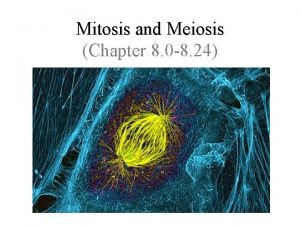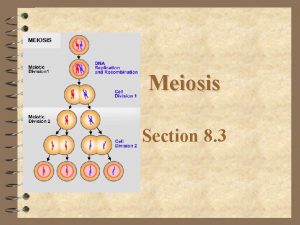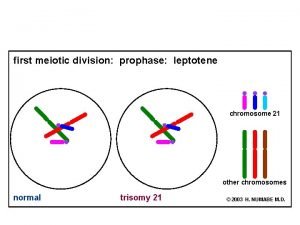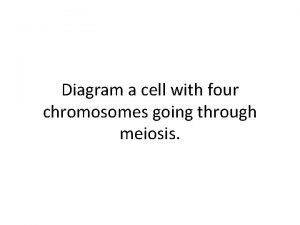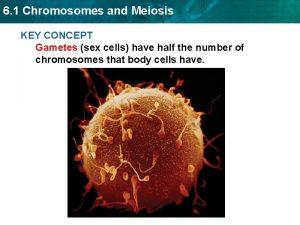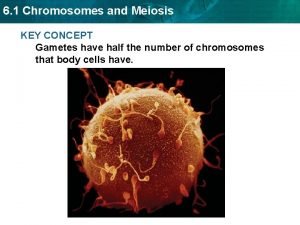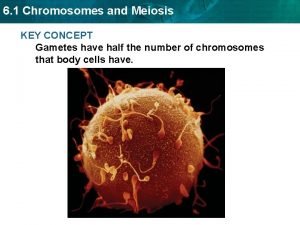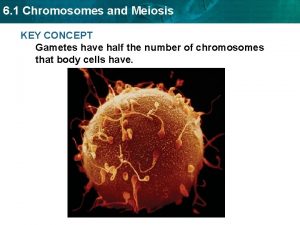6 1 Chromosomes and Meiosis KEY CONCEPT Gametes







- Slides: 7

6. 1 Chromosomes and Meiosis KEY CONCEPT Gametes have half the number of chromosomes that body cells have.

6. 1 Chromosomes and Meiosis You have body cells and gametes. • Body cells (like skin, muscle or nerve cells) are also called somatic cells. • Germ cells develop into gametes. – Germ cells are located in the ovaries and testes. – Gametes are sex cells: egg and sperm. – Gametes have DNA that can be passed to offspring. • Somatic cells have 2 of each chromosome whereas gametes only have a single set of chromosomes. body cells (muscle) sex cells (sperm) sex cells (egg)

6. 1 Chromosomes and Meiosis Your cells have autosomes and sex chromosomes. • Your body cells have 23 pairs of chromosomes. – Homologous pairs of chromosomes have the same structure. – For each homologous pair, one chromosome comes from each parent. • Chromosome pairs 1 -22 are autosomes. • Sex chromosomes, X and Y, determine gender in mammals. Summarize: Are homologous chromosomes identical to each other? Explain.

6. 1 Chromosomes and Meiosis Body cells are diploid; gametes are haploid. • Fertilization between egg and sperm occurs in sexual reproduction. • Diploid (2 n) cells have two copies of every chromosome. – Body cells are diploid. – Half the chromosomes come from each parent. – Example: For a human: 2 n = 46, where n = the total number of different chromosomes. Practice: What is the diploid number of the cell pictured?

6. 1 Chromosomes and Meiosis • Haploid (n) cells have one copy of every chromosome. – Gametes are haploid. – Gametes have 22 autosomes and 1 sex chromosome. – For example: in humans, the haploid number is 23. Practice: What is the haploid number of the cell pictured? Apply: Why is it important that gametes are haploid?

6. 1 Chromosomes and Meiosis • Chromosome number must be maintained in animals. • Many plants and some animals have more than two copies of each chromosome. • Mitosis and meiosis are types of nuclear division that make different types of cells. • Mitosis* makes more diploid cells *Remember: mitosis occurs in somatic cells for growth or to replace or repair old worn out cells.

6. 1 Chromosomes and Meiosis • Meiosis makes haploid cells from diploid cells. – Meiosis occurs in sex cells. – Meiosis is the production gametes (egg cell or sperm cells) that is essential for sexual reproduction. Compare and contrast: Explain how you think the process of mitosis and meiosis are similar and different.


